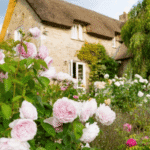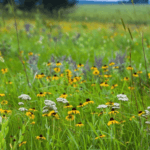
Beautiful flowers gardenia Plants For Your homes

Cypress trees are the majestic evergreen conifers that gardeners have loved for thousands of years. These trees, part of the Cupressaceae family, thrive in temperate climates. They can live over 1,000 years, like the Mediterranean Cypress (Cupressus sempervirens).
Cypress trees grow fast and can live in poor soil. They’re great for creating privacy or windbreaks. They grow between 40 to 70 feet tall, making them both useful and beautiful.
People love Cypress trees for being easy to care for. They fit well in both formal and casual gardens. Cypress trees add elegance and beauty to any outdoor area.
Cypress trees are tall, evergreen trees that have been loved by gardeners and landscapers for many years. They belong to the Cupressaceae family, which includes many types of trees. These trees are known for their unique leaves, beautiful shape, and many uses in landscaping.
Cypress trees are evergreens with feathery leaves and branches that carry cones. There are 12 types of these trees, with Italian and Arizona cypress being very popular. Some cypress trees can grow as tall as 45 meters. When young, they have a pyramid shape, making them look great in gardens.
The leaves of cypress trees are small and look like scales. They grow close together, giving a feathery look. The leaves can be green or bluish-green. These trees also have small cones that look like large acorns, adding beauty to their appearance.
Cypress trees have been used in landscaping for thousands of years. The ancient Greeks and Romans loved these trees for their beauty and used them in their gardens. Italian cypress was especially popular for its tall, slender shape.
Over time, cypress trees have been used for many things in landscaping. They are planted as decorative trees, privacy hedges, and windbreaks. The wood of some cypress trees is very strong and lasts a long time, making it great for building and furniture.
| Cypress Species | Height | Growth Rate | Hardiness |
|---|---|---|---|
| Italian Cypress (Cupressus sempervirens) | Up to 45 meters | Slow to moderate | Not frost-resistant |
| Leyland Cypress (Cupressocyparis leylandii) | Up to 20 meters | Fast (up to 1m per year) | Hardy |
| Arizona Cypress (Cupressus arizonica) | Up to 25 meters | Moderate | Moderately hardy |
Today, cypress trees are still loved for their beauty and many uses in landscaping. They are often used to create privacy screens, mark property lines, and add height to gardens. With their evergreen leaves, cypress trees look beautiful all year round.
Cypress trees are evergreen conifers that thrive in many environments worldwide. They belong to the Cupressus genus and include over 20 species and many cultivars. These trees have been around for over 65 million years, with some like the bald cypress living for thousands of years.
The Mediterranean cypress, also known as the Italian cypress, is a tall, slender tree. It symbolizes strength and can grow up to 115 feet tall with a spread of only 4-5 feet. Its dark green foliage and columnar shape make it perfect for Mediterranean-style gardens. It grows well in USDA zones 7-9.
Leyland cypress is a fast-growing tree that’s great for screens and hedges. It can grow 3-5 feet per year, reaching 20-22 feet tall with a broad shape. This tree is strong and adaptable, making it a top choice for privacy screens.
The Arizona cypress is native to the southwestern U.S. and northern Mexico. It’s known for being drought-resistant and suitable for dry areas. This tree grows up to 70 feet tall with blue-green foliage and attractive bark, making it a great choice for arid landscapes.
Bald cypress is a deciduous tree that thrives in wet environments. It’s known for its “knees,” woody roots that stick out above the water. This tree can live for thousands of years and is valued for its strong, decay-resistant wood.
| Cypress Species | Height | Growth Rate | USDA Zones |
|---|---|---|---|
| Mediterranean Cypress | Up to 115 feet | Slow to moderate | 7-9 |
| Leyland Cypress | Up to 20-22 feet | 3-5 feet per year | 6-10 |
| Arizona Cypress | Up to 70 feet | Moderate | 7-9 |
| Bald Cypress | Up to 150 feet | Slow to moderate | 4-10 |
When picking a cypress tree for your yard, think about the climate, hardiness zones, height, growth rate, and looks you want. Cypress trees come in many types, offering options for different landscapes and tastes.
Cypress trees bring many benefits to landscaping. They make your outdoor space look better and offer useful advantages. These evergreens are a great choice for any garden or property.
Cypress trees are great for privacy and windbreaks. Planting them in rows or in strategic spots can block views and reduce noise. They also protect against strong winds.
Their dense foliage provides privacy all year. This makes them perfect for a quiet, peaceful outdoor area.
Cypress trees are known for their beauty and elegance. They add a touch of sophistication to any landscape. You can use them as a focal point or along property lines.
They keep your garden looking great all year. Even in the cold months, they stay vibrant. For more on Bald Cypress trees, check out Greg’s article.
Some cypress species, like the Italian Cypress and Arizona Cypress, are very drought-tolerant. They can grow well with little water, making them perfect for easy landscaping. Once they’re established, they need little water and can survive droughts.
They also grow in different soils, from sandy to clay. This makes them versatile for various landscapes.
The following table highlights the drought tolerance and growth characteristics of popular cypress species:
| Cypress Species | Drought Tolerance | Height | Width |
|---|---|---|---|
| Italian Cypress | High | 40-60 feet | 3-6 feet |
| Arizona Cypress | High | 30-40 feet | 15-20 feet |
| Leyland Cypress | Moderate | 60-70 feet | 15-25 feet |
| Bald Cypress | Moderate | 50-70 feet | 20-30 feet |
Cypress trees are good for the environment too. They help wildlife, improve air quality, and regulate temperature and humidity. For more ideas on using cypress trees in your garden, visit Flowers Gardenia.
When picking the perfect cypress tree for your landscape, think about a few key things. These include your local climate and hardiness zone, and the tree’s mature size and growth rate. This ensures the tree will do well in its new home.
Different cypress trees handle cold temperatures differently. Make sure to pick one that fits your USDA hardiness zone. For example, the Italian cypress and Leyland Cypress do well in zones 7-10. The Arizona cypress is good for zones 6-9.
Choosing a tree suited to your climate boosts its chances of success. This makes your landscape look better for years to come.
Think about how big and how fast a cypress tree will grow. Some, like the Italian Cypress, can get over 100 feet tall. Others, like the Leyland Cypress, top out at about 22 feet.
This knowledge helps you place the tree right in your landscape. It makes sure it has enough room to grow without crowding other plants or buildings.
Also, cypress trees grow at different speeds. The Leyland Cypress grows fast, great for privacy screens. But, it needs regular pruning to stay tidy. The Arizona Cypress grows slower, reaching about 70 feet, making it good for smaller spaces.
| Cypress Species | USDA Hardiness Zones | Mature Height | Growth Rate |
|---|---|---|---|
| Italian Cypress | 7-11 | Over 100 feet (30.4 m) | Moderate |
| Leyland Cypress | 6-10 | Up to 22 feet (6.7 m) | Fast |
| Arizona Cypress | 6-9 | Up to 70 feet (21 m) | Slow to Moderate |
Think about your climate, hardiness zone, and the tree’s size and growth rate to pick the best cypress tree. Whether you like the tall Italian cypress, the quick-growing Leyland Cypress, or the versatile Arizona cypress, the right tree will make your landscape beautiful and healthy.
Cypress trees are a top pick for landscaping because they look great and are versatile. These evergreen conifers bring elegance to any yard while offering privacy and wind protection. To keep cypress trees healthy, pay attention to soil, sun, watering, and pruning.
Cypress trees do well in well-draining soil and full sun. They can handle different soils but prefer loam. Before planting, check the soil’s drainage and adjust the pH if needed.
Most cypress trees like full sun but some can handle shade. When planting, dig a hole 2-3 times wider and 6 inches deeper than the root ball. Add organic matter to improve drainage in poor soils. Water well after planting and mulch around the tree to keep moisture in and weeds out. Mulching helps the tree grow strong.
Watering is key for cypress trees, especially when they’re new. Water them once a week for the first few months to help them grow strong roots. Once they’re established, some cypress trees like the Italian Cypress (Cupressus sempervirens) need less water. But they still do well with deep watering every two to three weeks, depending on the weather and soil.
| Watering Method | Advantages |
|---|---|
| Drip Irrigation | Efficient, low-maintenance, delivers water directly to the root zone |
| Soaker Hoses | Provides slow, deep watering, minimizes water loss through evaporation |
| Manual Watering | Allows for close monitoring of soil moisture, suitable for small-scale plantings |
Don’t fertilize cypress trees often because they’re used to different soils. New trees might need slow-release fertilizer after their first year to grow well. Always follow the fertilizer instructions and don’t overdo it to avoid weak branches.
Cypress trees usually don’t need much pruning. But you can prune them to control size, remove dead branches, or fit them into your landscape design. Prune young trees anytime to shape them. Prune established trees in late winter or early spring to help them grow strong.
When pruning, use sharp tools to cut at a 45-degree angle. Don’t take off more than one-third of the tree’s leaves in one season to avoid stress. Pruning keeps the tree looking good, improves air flow, and prevents diseases and pests.
Follow these tips to make sure your cypress trees do well in your yard. They’ll add beauty, privacy, and value to your outdoor space for many years.
Cypress trees, especially the Leyland Cypress, are top picks for privacy hedges in the U.S. They grow fast, adding 3 to 5 feet each year. This makes them perfect for quick privacy needs. These trees can get as tall as 40 to 60 feet, sometimes reaching over 100 feet in ideal conditions.
Plant Leyland Cypress trees 4 to 5 feet apart for a solid screen. They do well in USDA Hardiness Zones 6 through 10, needing 5 hours of sunlight a day. They can handle partial shade too. These trees like moist, well-drained soil and are somewhat drought-resistant.
Leyland Cypress trees can grow up to 75 feet tall. They need regular pruning to keep their size manageable, which gets harder as they get older. These trees also face diseases like cankers and root rot due to their shallow roots.
If you’re looking for other options, here are some evergreen conifers that work well as privacy hedges:
| Tree Species | Growth Rate | Hardiness Zones | Characteristics |
|---|---|---|---|
| Green Giant Arborvitae | Up to 3 feet per year | 5-9 | Disease-resistant, adaptable to varying light conditions |
| Virescens Western Red Cedar | Up to 2 feet per year | 5-9 | Controlled growth rate, formal or informal hedge, moderate drought tolerance |
| American Arborvitae | 1-2 feet per year | 2-8 | Cold-hardy, low maintenance, versatile in various landscapes |
When picking a cypress tree or another option for your privacy hedge, think about your climate, hardiness zone, and what you want for size and growth. Choose the right evergreen conifer to get a beautiful, useful, and lasting privacy screen that boosts your property’s look and value.
Cypress trees are great for both formal and informal gardens. They have a striking shape and stay green all year. This makes them perfect for adding focus and height to any garden. The Italian cypress is especially good for making bold statements and defining spaces.
In formal gardens, cypress trees look great when planted in a symmetrical way. They create a look that’s both structured and elegant. Italian cypress trees are great for making paths, framing doors, or lining walkways. Planting them 3 feet apart makes a beautiful screen or windbreak, adding privacy and beauty.
Cypress trees, like the Mediterranean cypress, are great for catching the eye. They have a unique shape and texture that makes them stand out. Whether alone or in groups, they bring elegance and sophistication to any garden.
Cypress trees fit perfectly in Mediterranean-style gardens because they’re from the region. They go well with plants like lavender, rosemary, and olive trees. The Italian cypress is a key part of creating a Mediterranean feel. Adding cypress trees with terra cotta pots, gravel paths, and water features can make you feel like you’re in Tuscany or Greece.
| Cypress Tree | Height | Width | Growth Rate |
|---|---|---|---|
| Italian Cypress | 40-70 feet | 3-20 feet | 1-2 feet per year |
| Leyland Cypress | 60-70 feet | 15-20 feet | 2-3 feet per year |
| Green Giant Cypress | 40-60 feet | 12-20 feet | 3-5 feet per year |
Think about the size and growth of cypress trees before adding them to your garden. They can make any landscape look better, whether it’s formal or casual. Cypress trees add beauty and interest, making your outdoor space unforgettable.
Cypress trees, like the bald cypress (Taxodium distichum), are not just beautiful evergreens. They are also key to supporting wildlife. These trees offer a home and shelter for many birds and small animals. They are a great choice for anyone wanting to help the environment.
The thick leaves of cypress trees protect birds from predators and harsh weather. Bald cypress trees are perfect for birds to build their nests. They are often found together, creating safe spots for herons, egrets, and other birds. The cones of these trees are also a food source for ducks, turkeys, songbirds, and squirrels.
Cypress swamps, like the Big Cypress Swamp, are full of life. They are filled with bald cypress trees and many other plants and animals. You can find unique plants like swamp fern and marsh fleabane here. Epiphytes like bromeliads and orchids also grow on the trees.
In cypress swamps, the tallest trees live in deep water, and smaller ones thrive near the edges. This creates a perfect place for many animals. Alligators help by making “alligator holes” that are important water sources for other animals when it’s dry. Bald cypress trees are also where alligators breed.
Cypress strands are long swamps with flowing water. They have trees like red maples that love wet places. River otters live here, using holes and dens for shelter.
Cypress trees and their habitats are home to many birds and small mammals. Some birds that like these trees include:
The table below shows some birds that rely on cypress habitats:
| Bird Species | Nesting Habits | Foraging Behaviors |
|---|---|---|
| Great Blue Heron | Colonial nester in cypress rookeries | Feeds on fish, amphibians, and small mammals |
| Wood Duck | Nests in tree cavities, including cypress trees | Feeds on aquatic plants, seeds, and invertebrates |
| Prothonotary Warbler | Nests in tree cavities near water, often in cypress swamps | Gleans insects from foliage and bark |
| Barred Owl | Nests in tree cavities, including cypress trees | Hunts small mammals, birds, and amphibians |
Adding cypress trees, especially the bald cypress, to your yard or land helps wildlife. It also lets you enjoy the beauty and benefits of these trees.
Cypress trees, like Italian, Arizona, and Leyland cypress, are usually easy to care for. But, they can sometimes face issues with pests and diseases. Knowing about these problems and how to fix them is key to keeping these trees healthy and beautiful.
These trees can get pests and diseases that harm their look and health. Spider mites and bagworms can damage the leaves, but watering and keeping the tree healthy can help stop them. Cypress canker, a fungal disease, can cause branches to die and the tree to decline. But, you can manage it by pruning and keeping the tree healthy.
In North Carolina, many cypress trees are planted in yards for screens or barriers. They face diseases, pests, and stress that can change how they look as they grow. A guide, like the one in this privacy policy, can help spot and fix problems with cypress trees.
The table below shows how often certain problems occur on arborvitae, Leyland cypress, and junipers:
| Problem | Arborvitae | Leyland Cypress | Juniper |
|---|---|---|---|
| Cankers | Rare | Common | Rare |
| Root Rot | Common | Common | Rare |
| Spider Mites | Rare | Occasional | Common |
Look out for different signs on the main stem, branches, and leaves. These signs can mean problems like woodpecker damage, insects, or cankers. Watch for trunk holes, swellings, bark cracks, resin flow, and leaf color changes.
Cypress trees are pretty tough against drought and heat once they’re grown. But young trees might need protection from cold or too much wet soil. Choosing the right spot and planting them correctly can help them handle bad weather.
When planting Leyland cypress, make sure to space them 10-15ft apart, or even 16-18ft if they can get really tall. This helps stop diseases like Armillaria and Phytophthora root rots, and cankers from spreading. Poor spacing and planting can lead to these problems.
Testing the soil and fixing it before planting Leyland cypresses is key to avoiding diseases from too much water. Root problems like vole damage, girdling, and root rot can be lessened by planting them right and having good soil.
If pests or diseases get really bad, consider using different plants in your fence to stop problems from spreading. Instead of Leyland cypress, you could use Cryptomeria japonica, Hesperocyparis arizonica, or Ilex cornuta for a living fence.
Cypress trees, like the Mediterranean cypress (Cupressus sempervirens) and Italian cypress, have amazed people for centuries. They are known for their beauty and interesting traits. These evergreen trees have been important in art, literature, and myths. They also have some of the oldest and tallest trees in the world.
For a long time, cypress trees have been in art and literature. They often symbolized death, mourning, and the underworld. In Greek myths, the cypress tree was linked to Hades, the god of the underworld. Its dark look and ability to grow in cemeteries added to this link.
Famous artists like Vincent van Gogh and Claude Monet have used cypress trees in their work. They show the trees’ striking shapes against the sky. In literature, authors like William Shakespeare, John Milton, and J.R.R. Tolkien have mentioned the Italian cypress. This adds a sense of mystery and seriousness.
Cypress trees are very long-lived, with some living for thousands of years. The oldest cypress is the Sarv-e Abarqu in Yazd Province, Iran. It’s over 4,000 years old, making it one of the oldest living things on Earth.
The tallest cypress is a Monterey Cypress (Cupressus macrocarpa) named “The Lawnmower.” It’s 90 feet (27.4 meters) tall. This tree is in Carmel-by-the-Sea, California, showing how cypress trees can grow very tall.
| Tree Name | Species | Location | Age/Height |
|---|---|---|---|
| Sarv-e Abarqu | Mediterranean cypress | Yazd Province, Iran | Over 4,000 years old |
| The Lawnmower | Monterey Cypress | Carmel-by-the-Sea, California | 90 feet (27.4 meters) tall |
These amazing cypress trees show how resilient and adaptable these evergreens are. They have survived for centuries and still inspire awe today.
Cypress trees are a great choice for many landscapes. They are evergreen and offer many benefits. These include privacy, wind protection, and making your outdoor space look better.
They are also easy to care for, even for beginners. Cypress trees can handle drought and grow well in different soils. This makes them perfect for both new and seasoned gardeners.
There are many types of cypress trees to choose from. You can pick the right one for your garden or yard. Whether you want a tall, slender tree or a wide, pyramidal one, there’s a cypress tree for you.
Cypress trees are good for your garden’s health and the local wildlife. They attract birds and small animals, making your yard a lively place. With the right care, like watering, fertilizing, and pruning, your cypress tree will last for many years.
When planning your garden, think about adding a cypress tree. They can make your outdoor space peaceful, welcoming, and beautiful. Adding a single tree or a hedge of cypress trees is a smart choice for your property’s beauty and value.




